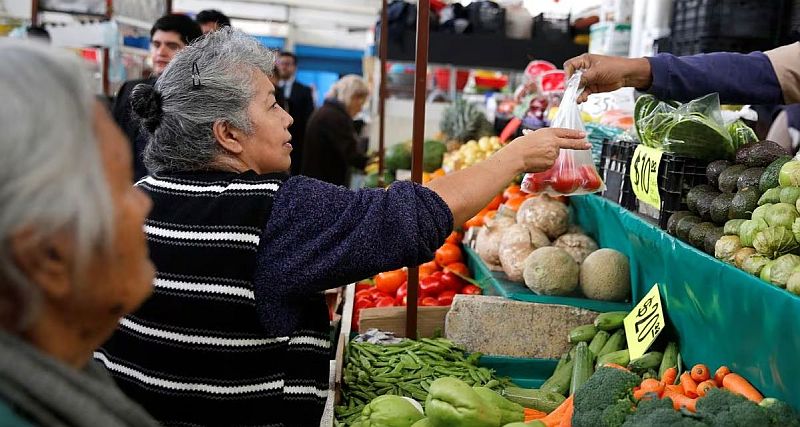
Mexico City – Inflation in Mexico surged to 4.9% during the first half of January, marking a 0.49% increase compared to the same period in 2023, according to data released by the National Institute of Statistics and Geography on Wednesday.
The rise, the fifth consecutive two-week period increase, surpassed the Bank of Mexico’s 3% forecast, reaching the highest rate since 2021. Notable price hikes were observed in tomatoes, dining out, onions, cigarettes, allergy medication, and housing. Conversely, airfare and tourism costs experienced a decline.
The headline inflation was attributed to a spike in non-core inflation, which rose to 5.24%, up from 4.49% the previous year. Non-core inflation includes volatile products and services sensitive to short-term weather patterns, leading to rapid price fluctuations.
Gabriela Siller Pagaza, director of economic and financial analysis at Banco BASE, foresaw the spike, stating, “This has made it evident that the annual risks of inflation in Mexico continue.” She linked the increase in certain services, such as dining out, to the rise in the minimum wage from 207.44 pesos (about $12 USD) to 248.93 pesos (about $14.50) per day.
Siller Pagaza highlighted external risks, such as transport costs and the high budget deficit of 4.9%, the highest since 1988, which could further push inflation upwards.
A report by Mexico’s Grupo Financiero Banorte identified challenges for agricultural goods, citing adverse weather conditions affecting crops. Prices for these goods are expected to remain under pressure, with a 20.7% annual comparison for fruits and vegetables.
While headline inflation increased, core inflation aligned with predictions, decreasing to 4.78% from 4.98% last year, its lowest level since August 2021. This rate does not include volatile products in the non-core category.
Despite the uptick in headline inflation, it is anticipated that the Bank of Mexico will cut interest rates in March.




